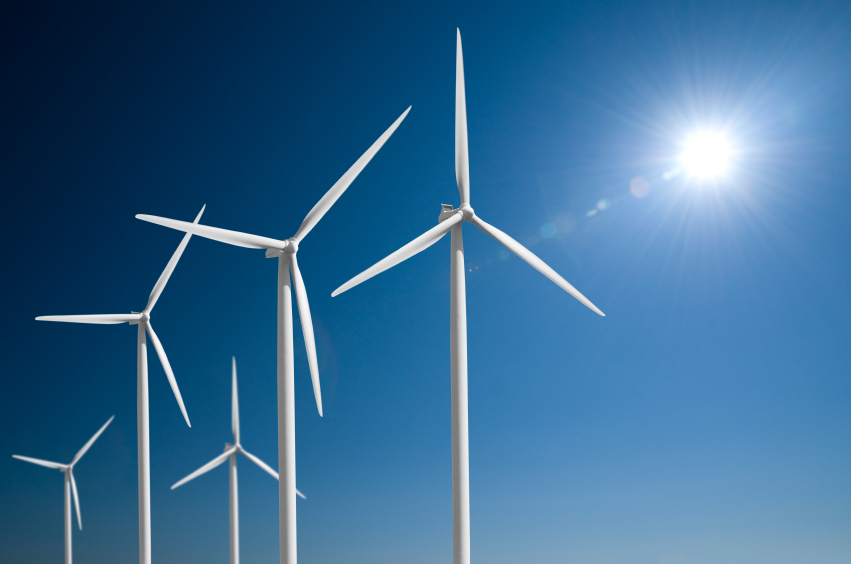
Early in February, an innovative new wind turbine prototype testing and certification site, the largest of its kind anywhere in Europe, opened its doors for business. Located on the leafy campus of Wageningen University and Research Centre in the Netherlands, Test Site Lelystad is scheduled to start testing the next generation of wind turbines later this month.
Day-to-day management of the purpose-built 3,000 acre site is contracted out to Dutch company Ecofys, which has created a new company called Ecofys Wind Turbine Testing Services (WTTS) especially for the purpose. Lelystad has already entered into agreements with several wind energy companies eager to make use of its services. So eager, in fact, that the site is already fully booked for the next seven years.
“The first turbine is expected to be operational by the end of March 2011. Another seven turbines are expected to follow during the course of 2011, while the last four turbines will be erected in 2012,” says Michiel Müller, Managing Director of Ecofys WTTS and Site Manager at Lelystad.
“In addition several meteorological masts will be erected on the site,” he adds.
The first operational turbine to be tested will come from locally-based outfit STX Windpower,followed by a further batch of turbines fromLagerwey, EWT, Suzlon and Leitwind.
“Finally, some turbines are currently in the last phase of tendering and arrangement. [These include] turbines from Eneco, Zeshoek and Wageningen UR. These latter turbines are used for long-term research programs, mainly focused on operation and maintenance strategies,” says Müller.
Testing and Certification
For manufacturers, a key attraction of the site is its ability to offer comprehensive turbine certification and accreditation services. Earlier this year, Ecofys WTTS inked a collaboration agreement with the German measurement and testing institute windtest grevenbroich gmbh, which enables it to provide the full portfolio of accredited measurement services required forIEC and MEASNET compliance certification.
Before it can make use of the Lelystad facility, each turbine manufacturer must sign a seven year contract with both Ecofys WTTS and windtest grevenbroich and agree to subject its technology to an extensive testing and measurement program.
After that, companies may renew the contract and agree to a further testing and measurement program, or leave the site, leaving it open for another company to be contracted. According to Müller, while some companies focus on type certification – with two or more prototypes being measured – others are interested in more extensive research programmes focusing, for example, on the improvement of blade performance or the investigation of generator modifications.
“In practice, the manufacturers define their own measurement and test programme. Specific measurement contracts are signed between the turbine manufacturer, Ecofys WTTS and windtest grevenbroich gmbh,” explains Müller.
“According to this contract, met mast(s) are erected, measurement equipment installed and campaigns executed,” he adds.
Technology
Test Site Lelystad can service turbines at any one of twelve different ‘positions,’ six of which can manage prototypes up to a maximum tip height of 200 metres and a further six which can test turbines up to maximum tip height of 150 metres – with an overall combined installed capacity of up to 30 MW.
Lelystad offers the full range of measurement services required by the IEC for the certification of wind turbine prototypes including, wind measurements, site calibration, power performance, power quality, mechanical load and sound emissions testing and grid code certification. The results of each measurement exercise are subsequently verified by one of the main certification bodies for type certification.
A full site assessment, including the wind regime and the sectors for which certification measurement campaigns are applicable is also available. The assessment results have been verified using the production of data at wind farms close to the site – where the mean wind speed at a height of 80 metres is assessed at 6.6 m/s.
History
The development of Test Site Lelystad is one of the results of a broader initiative of Wageningen UR and Ecofys parent company Eneco to develop innovations in renewable energy systems, including wind, solar and biomass, at the grounds of Wageningen UR. This initiative was started some five years ago and was warmly received by the City of Lelystad and the Province of Flevoland. In the following years the regions ‘zoning plan’ was adjusted to enable the development of such projects.
In early 2011, Eneco asked Ecofys to take over the development of the test site, since it no longer considered developments of this kind to fit within its strategic core.
“Ecofys has a long history in wind measurements, resource assessments and long lasting relationships with many parties in the wind industry,” says Müller.
“Ecofys founded [the] WTTS [company] to operate and coordinate the site, arrange for all contracts and to provide all required management and measurement services to the turbine manufacturers,” he adds.
On 14 October 2010, all the final financial agreements were reached and the relevant contract was signed, paving the way for construction works for the first turbine and access roads to commence later that year.
“During 2011, road access construction works to all turbine sites will be completed and a glass fibre network will be installed,” says Müller.
Sustainable Energy Systems
For Ecofys, sites like these are a crucial step on the long road to a fully sustainable and renewable global energy system. According to a recently published Energy Report co-authored by Ecofys and WWF, wind energy will undoubtedly be a main factor in achieving such an energy system by 2050 across the globe.
“We can do this by improving the technologies that are already at hand,” says Manon Janssen, CEO of Ecofys.
For Müller, sites like Lelystad are very important simply because in order to drive wind energy development further and meet increasingly ambitious targets, turbine technology must undergo continual improvement and innovation.
“I think a test site like this is essential for the development of the wind energy sector and consequently for working towards a fully sustainable energy supply,” he says.







